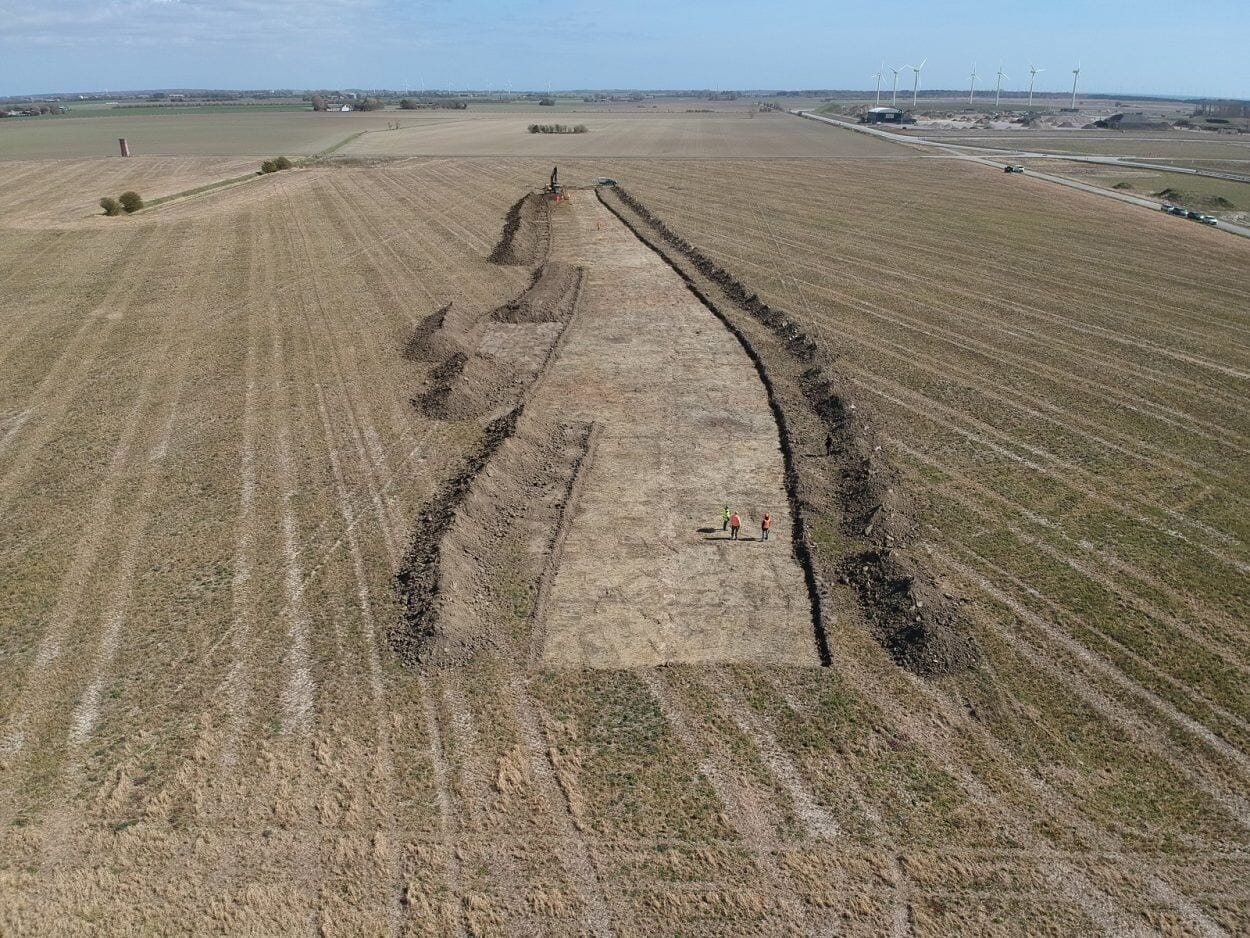Archaeologists from the Museum Lolland-Falster have discovered a large 770-metre-long defensive earthwork belt that dates from around the Roman Iron Age near Rødbyhavn on Lolland, Denmark.
The Roman Iron Age is a period from AD 100-400 that is used to describe the hold that the Roman Empire had begun to exert on the Germanic tribes of Northern Europe in Denmark, Norway, and Scandinavia.
During this period, there was an influx of trade between the northern tribes and the Roman Empire, with the import of various high-status items such as vessels, bronze images, glass items, and weapons.
By the 5-6th centuries, the Roman Empire was ransacked by the Germanic tribes, bringing an end to the Roman Iron Age and the start of the Germanic Iron Age (also called the Vendel Era or the Merovinger Age).
Archaeologists have so far detected 770-metres of the defensive belt, but they believe that this is just part of a larger fortified line that ran from the island’s wetlands to the coast measuring up to 1400 metres.
Described as a minefield, the area studied contains at least 10,000 holes that held sharpened spikes with the aim to delay any advancing armies.
A similar technique was used by the Roman military, often referred to in historical documents as “the lily”. Roman soldiers would sink foot long iron hooks into the ground, a technique Caesar himself used successfully during his campaigns against the Gauls.
Header Image – The course of the hollow belt at Rødbyhavn. Image Credit : Museum Lolland-Falster





